Every now and then I succumb to cuteness. Samara, however, has requested that I base a character on her, one that slaughters all the “insects,” whatever that means.

9. Cat O’ Nine Tails (1971): Dario Argento’s second feature lacks the crazy cat moments memorable in Bird with the Crystal Plumage (1970), which has a character who eats cats, and Inferno (1980), which has a character randomly mauled by cats who fly at her from the sides of the screen. A cat makes the title, however, because our furry Internet-ruling friend provides a metaphor for the entire film, the mystery behind which is like the titular fetish device, so twisted that following its nine suspects/possibilities is like a kind of tickle-clawing torture.
 8. Cat in the Brain (1990): Lucio Fulci and Dario Argento supposedly had trouble getting along for years because Fulci piggybacked on Argento’s early success with animal-themed giallo films (Italian crime thrillers) such as Fulci’s derivative-but-good Lizard in a Woman’s Skin (1971). Cat in the Brain, a late Fulci effort, follows Argento in having a mainly metaphorical connection to our furry friends, who are tearing up the brain of Fulci himself, who stars as himself, a director whose past films (shown amply in flashbacks) are manifesting in present-day murders. This cat won’t likely please you if you’re not a Fulci fan, but if you like the Godfather of Gore, it’s postmodern catnip.
8. Cat in the Brain (1990): Lucio Fulci and Dario Argento supposedly had trouble getting along for years because Fulci piggybacked on Argento’s early success with animal-themed giallo films (Italian crime thrillers) such as Fulci’s derivative-but-good Lizard in a Woman’s Skin (1971). Cat in the Brain, a late Fulci effort, follows Argento in having a mainly metaphorical connection to our furry friends, who are tearing up the brain of Fulci himself, who stars as himself, a director whose past films (shown amply in flashbacks) are manifesting in present-day murders. This cat won’t likely please you if you’re not a Fulci fan, but if you like the Godfather of Gore, it’s postmodern catnip.
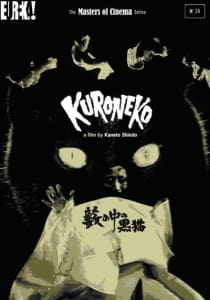 7. Kuroneko (1968): Stylish Italian films and stylish Japanese films have been trading ideas for decades (more on that in a moment), and this classic Japanese kaidan (wronged women with long black hair out for revenge, most familiar to Americans from the remake of The Ring, 1998 / 2002) hybrid features awesome cat-woman ghost dueling, glorious use of black and white tonality, and some samurai for good measure. Not the best Japanese horror from the 60s, but in my top five, and my favorite one focused on cats. The title means black cat.
7. Kuroneko (1968): Stylish Italian films and stylish Japanese films have been trading ideas for decades (more on that in a moment), and this classic Japanese kaidan (wronged women with long black hair out for revenge, most familiar to Americans from the remake of The Ring, 1998 / 2002) hybrid features awesome cat-woman ghost dueling, glorious use of black and white tonality, and some samurai for good measure. Not the best Japanese horror from the 60s, but in my top five, and my favorite one focused on cats. The title means black cat.
 6. Cat’s Eye (1985): The frame story focuses on a cat erring on a sort of quest to rescue young Drew Barrymore, whom he reaches in time for the third and final story in the anthology. The third story, about the girl’s (and cat’s) battle with a breath-stealing mini-monster, sort of sucks now that I’m grown up. However, the first two, about quitting smoking corporate-style and going out on a ledge for a married woman (literally), are based on classic Stephen King shorts and hold up due to dark humor, massive tension, and great performances from leads James Woods and Robert Hays. The cat gets important moments in both the grown-up stories, too.
6. Cat’s Eye (1985): The frame story focuses on a cat erring on a sort of quest to rescue young Drew Barrymore, whom he reaches in time for the third and final story in the anthology. The third story, about the girl’s (and cat’s) battle with a breath-stealing mini-monster, sort of sucks now that I’m grown up. However, the first two, about quitting smoking corporate-style and going out on a ledge for a married woman (literally), are based on classic Stephen King shorts and hold up due to dark humor, massive tension, and great performances from leads James Woods and Robert Hays. The cat gets important moments in both the grown-up stories, too.
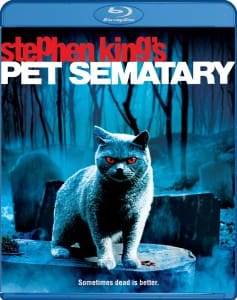 5. Pet Sematary (1989): Everybody thinks about Gage, who played with Mommy and is now going to play with you, but really, Church, the cat, is the star villain of the piece, especially if you think about the Stephen King novel along with the film. Church snuffs it, and that’s going to make the kids sad, so why not see if that supernatural pet cemetery resurrects him like the neighbor says it will? And if it works on the cat…? What’s good for the cat ain’t good for the kiddies. A cat would be the first to tell you not to follow a cat’s example, and my cat Samara would be the first to tell you that people don’t listen to her advice often enough.
5. Pet Sematary (1989): Everybody thinks about Gage, who played with Mommy and is now going to play with you, but really, Church, the cat, is the star villain of the piece, especially if you think about the Stephen King novel along with the film. Church snuffs it, and that’s going to make the kids sad, so why not see if that supernatural pet cemetery resurrects him like the neighbor says it will? And if it works on the cat…? What’s good for the cat ain’t good for the kiddies. A cat would be the first to tell you not to follow a cat’s example, and my cat Samara would be the first to tell you that people don’t listen to her advice often enough.
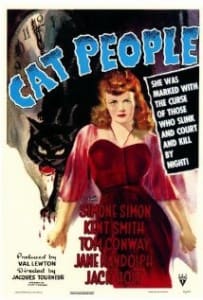 4. Cat People (1942): This Lewton/Tourneur collaboration makes some lists of greatest horror films of all time, and with good reason: it’s one of the best films to replicate the effect I forever associate with Turn of the Screw, i.e., leaving in suspension questions of whether the horror is primarily psychological or supernatural. So is this a werecat movie or isn’t it? It’s beautifully shot, with beautiful people and beautiful cats, and the reflections on the psychology and beliefs of the times are so compelling that suspension and suspense become delightfully relentless.
4. Cat People (1942): This Lewton/Tourneur collaboration makes some lists of greatest horror films of all time, and with good reason: it’s one of the best films to replicate the effect I forever associate with Turn of the Screw, i.e., leaving in suspension questions of whether the horror is primarily psychological or supernatural. So is this a werecat movie or isn’t it? It’s beautifully shot, with beautiful people and beautiful cats, and the reflections on the psychology and beliefs of the times are so compelling that suspension and suspense become delightfully relentless.
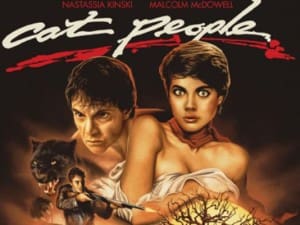 3. Cat People (1982): More a fantasy about the first film than a remake, this is my favorite werecat movie. The transformation sequences are good but not great (appearing not long after American Werewolf in London (1981), they seem uninspired). What is great is the music, famously David Bowie’s “Theme from Cat People (Putting Out Fire),” but really the entire synth-filled soundtrack, eighties dreamy at its best. What is greater are the sex-infused storyline and eye-popping presences of Nastassja Kinski and Malcolm McDowell. The first film’s premise gets dilated: certain people get turned on and become black leopards, and to become human again, they must kill. Oh. My. Violent estrus.
3. Cat People (1982): More a fantasy about the first film than a remake, this is my favorite werecat movie. The transformation sequences are good but not great (appearing not long after American Werewolf in London (1981), they seem uninspired). What is great is the music, famously David Bowie’s “Theme from Cat People (Putting Out Fire),” but really the entire synth-filled soundtrack, eighties dreamy at its best. What is greater are the sex-infused storyline and eye-popping presences of Nastassja Kinski and Malcolm McDowell. The first film’s premise gets dilated: certain people get turned on and become black leopards, and to become human again, they must kill. Oh. My. Violent estrus.
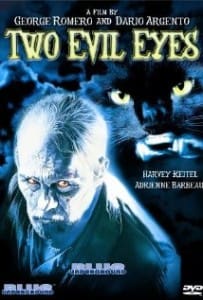 2. “The Black Cat” from Two Evil Eyes (1990): Yes, I wrote a book about Argento, and yes, he gets to have two on this list, because although many have worked with Poe’s “Black Cat,” and many other films have that title (including one by Fulci), this one—half of Argento’s collaboration with George A. Romero, Two Evil Eyes—is my favorite. It ranges across Poe, featuring Harvey Keitel as Roderick Usher, a photographer who captures crime scenes (including one right out of “Pit and the Pendulum”). The ending makes kitties even more horrific than Poe does. Ah, Dario.
2. “The Black Cat” from Two Evil Eyes (1990): Yes, I wrote a book about Argento, and yes, he gets to have two on this list, because although many have worked with Poe’s “Black Cat,” and many other films have that title (including one by Fulci), this one—half of Argento’s collaboration with George A. Romero, Two Evil Eyes—is my favorite. It ranges across Poe, featuring Harvey Keitel as Roderick Usher, a photographer who captures crime scenes (including one right out of “Pit and the Pendulum”). The ending makes kitties even more horrific than Poe does. Ah, Dario.
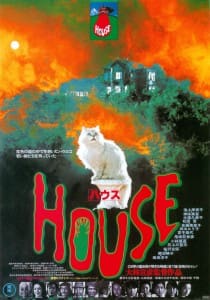 1. Hausu (1977): Ruled by the wild colors and non-rational narrative structure of the Italian films that were becoming popular in Japan at the time, Hausu (House) is one of my favorite films of all time, and since a white cat presides over the house that gobbles up schoolgirls, it’s one of Samara’s, too. Flying severed heads, carnivorous pianos, dancing skeletons, and more await you inside this brilliant little film, colorful, hallucinogenic, funny, scary, must-see.
1. Hausu (1977): Ruled by the wild colors and non-rational narrative structure of the Italian films that were becoming popular in Japan at the time, Hausu (House) is one of my favorite films of all time, and since a white cat presides over the house that gobbles up schoolgirls, it’s one of Samara’s, too. Flying severed heads, carnivorous pianos, dancing skeletons, and more await you inside this brilliant little film, colorful, hallucinogenic, funny, scary, must-see.
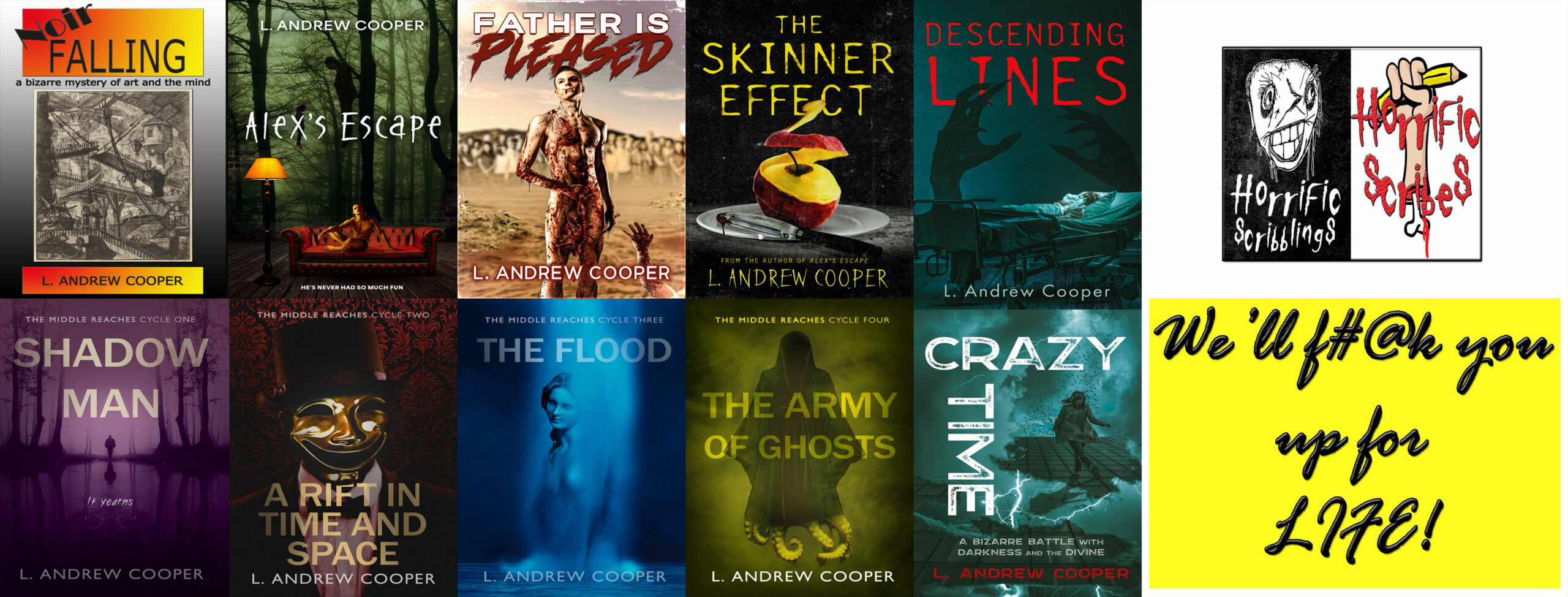
A Samara photo and we get to find out what Samara’s favorite cat movie is. What great bonuses! LOL Great list! Need to put on that David Bowie track now… 🙂